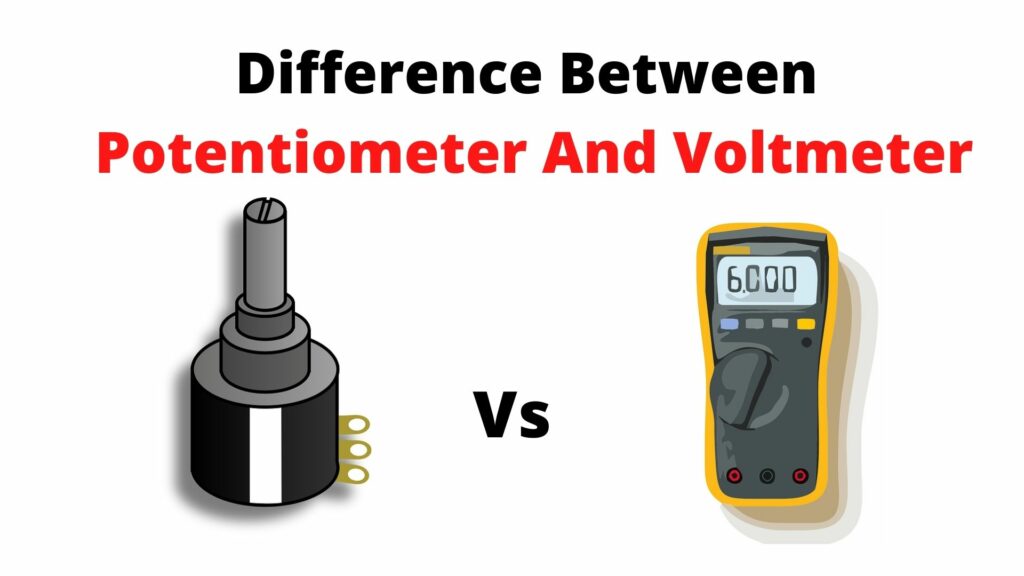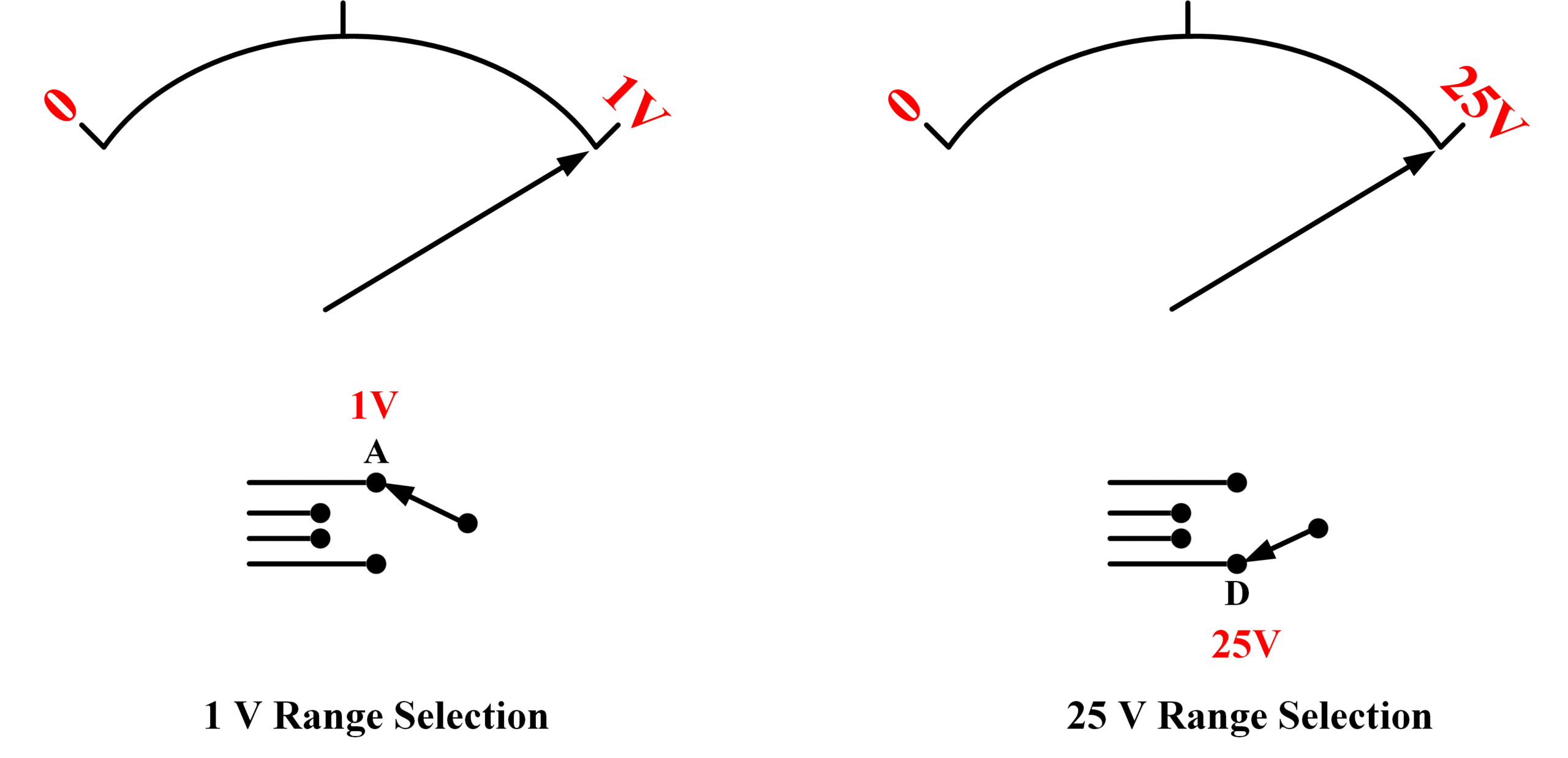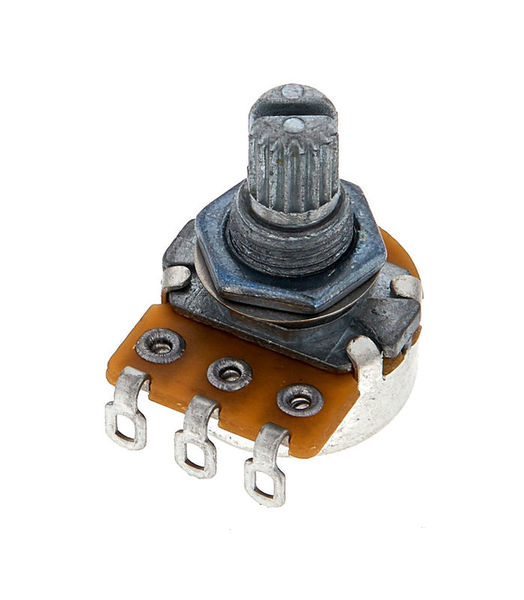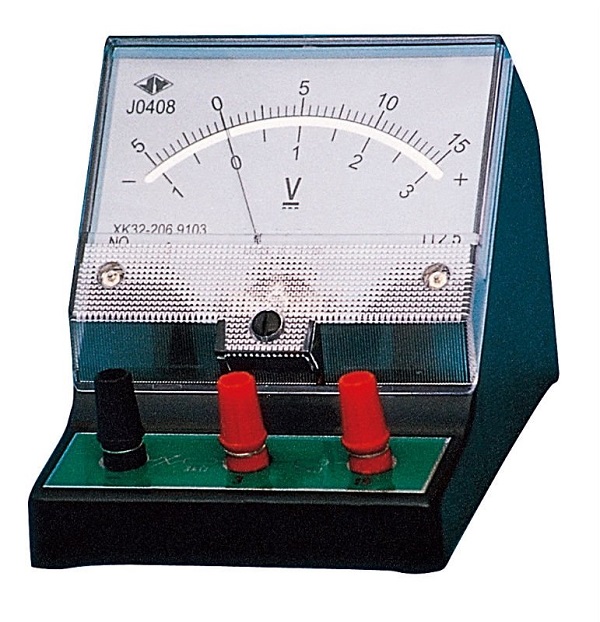Welcome to Linquip again! In this article, we are going to discuss the core difference between a potentiometer and a voltmeter. Buckle up and keep reading.
To understand the difference between a potentiometer and a voltmeter, first, we should learn what a potentiometer is.
Potentiometer
A potentiometer is a variable resistor, while a voltmeter is a device that measures voltage.
A potentiometer, also called a POT, is a 3-terminal variable resistor and is used to adjust the resistance in a circuit.
The potentiometer is a device mainly used to measure the EMF of a given cell and to compare the EMFs of cells. It is also used to measure the internal resistance of a given cell.
Circuit diagram of potentiometer
The potentiometer consists of a long resistive wire AB of length L (about 6m to 10 m long) made up of manganine or constantan. A battery of known voltage e and internal resistance r called a supplier battery or driver cell. Connection of these two forms a primary circuit.
One terminal of another cell (whose EMF E is to be measured) is connected at one end of the main circuit and the other terminal at any point on the resistive wire through a galvanometer G. This forms the secondary circuit.
Other details are as follows
J = Jockey
K = Key
R = Resistance of potentiometer wire,
r = Specific resistance of potentiometer wire.
Rh = Variable resistance which controls the current through the wire AB
To choose the right equipment and understand the Difference Between Potentiometer and Voltmeter, it is vital for you to know each and every one of their features.
Points to remember
- The specific resistance (r) of the potentiometer wire must be high but its temperature coefficient of resistance (a) must be low.
- All higher potential points (terminals) of primary and secondary circuits must be connected together at point A and all lower potential points must be connected to point B or jockey.
- The value of the known potential difference must be greater than the value of the unknown potential difference to be measured.
- The potential gradient must remain constant. For this, the current in the primary circuit must remain constant and the jockey must not be slid in contact with the wire.
- The diameter of the potentiometer wire must be uniform everywhere.
Sensitivity of potentiometer
A potentiometer is said to be more sensitive if it measures a small potential difference more accurately.
1- The sensitivity of the potentiometer is assessed by its potential gradient. The sensitivity is inversely proportional to the potential gradient.
2- In order to increase the sensitivity of the potentiometer
3- The resistance in the primary circuits will have to be decreased.
4- The length of the potentiometer wire will have to be increased so that the length may be measured more accurately.
Potentiometers are used to measure the movement of an object in either a linear or rotary fashion. They are a part of our product range here at Linquip.
How does a Potentiometer work?
- Also known as a Potmeter or Pot, it consists of a resistive element called the track and a sliding contact called the wiper internally where end terminals are attached to the resistive element.
- Resistance is then adjusted with the manual wiper which is movable and touches a resistive strip of material. When it is moved up closer to terminal 1 and away from terminal 2, resistance is lowered to terminal 1 while resistance is raised at terminal 2 and vice versa.
- The input voltage will be applied across the resistor where the output voltage will be the drop in voltage between the fixed and sliding contact as shown below.
- They are used to accurately measure voltage and help achieve a variable voltage from a fixed-voltage source.
- They are passive devices which means they do not need a power supply or additional circuits to function.
Common Examples of Potentiometers are:
- Measuring Position on a gaming joystick
- Controlling audio equipment using volume controls
Uses of a Potentiometer
- POTs are used for controlling the signal level of a circuit and not the power of the circuit
- Volume control on TV’s and other audio equipment.
- Used in joysticks as a position transducer.
- TRIAC switching applications.
- Voltage divider circuits.
Now, to understand the Difference Between Potentiometer and Voltmeter, we are going to explain what a Voltmeter is and then compare it to a Potentiometer.
What is a voltmeter?
A Voltmeter is an instrument that measures voltages of either direct or alternating electric current on a scale usually graduated in volts, millivolts (0.001 volts), or kilovolts (1,000 volts). Many voltmeters are digital, giving readings as numerical displays.
Voltmeters can also provide readings in analog form, by moving a pointer that indicates voltage on a scale, but digital voltmeters generally have a higher order of accuracy than analog instruments.
Working Principle of Voltmeter
The main principle of a voltmeter is that it must be connected in parallel in which we want to measure the voltage. Parallel connection is used because a voltmeter is constructed in such a way that it has a very high value of resistance. So if that high resistance is connected in series then the current flow will be almost zero which means the circuit has become open.
If it is connected in parallel, then the load impedance comes parallel with the high resistance of the voltmeter, and hence the combination will give almost the same impedance that the load had. Also in the parallel circuit, we know that the voltage is the same so the voltage between the voltmeter and the load is almost the same and hence voltmeter measures the voltage.
For an ideal voltmeter, the resistance is to be infinity, and hence the current drawn is to be zero so there will be no power loss in the instrument. But this is not achievable practically as we cannot have a material that has infinite resistance.
Difference Between Potentiometer and Voltmeter
| Potentiometer | Voltmeter |
| A potentiometer measures the emf of a cell very accurately. | A voltmeter measures the emf of the cell approximately. |
| The potentiometer does not draw any current from a known emf source while measuring current. | Voltmeters draw current from known emf sources while measuring current. |
| While measuring emf, the resistance of the potentiometer becomes infinite. | While measuring emf, the resistance of the voltmeter becomes very high but measurable. |
| In the potentiometer sensitivity is high. | The voltmeter sensitivity is low. |
| It is based on the null deflection method. | It is based on the deflection method |
Now you know the core Difference Between Potentiometer and Voltmeter.
Hope you enjoyed the article! You can find similar content on Linquip, a professional network for equipment manufacturers, industrial customers, and service providers.
Buy Equipment or Ask for a Service
By using Linquip RFQ Service, you can expect to receive quotations from various suppliers across multiple industries and regions.
Click Here to Request a Quotation From Suppliers and Service Providers
Read More On Linquip
- Difference Between Voltmeter and Ammeter
- 7 Different Multimeter Parts and Components: All You Need to Know about All the Components
- The Practical Guide To Types of Multimeters
- A Brief Look at Types of Multimeters
- Difference Between Multimeter and Voltmeter
- What is Potentiometer? The Ultimate Guide to Knowing Potentiometers And Their Construction
- Types of Potentiometers: The Ultimate Guide to Learning About Different POT Types
- What is the Difference Between Potentiometer and Rheostat?
- Potentiometer Connection, Working, Circuit Diagram, & Wiring Guide
- What Is a Digital Potentiometer? An Explanation of the Working Principle and Advantages
- What is a Rotary Potentiometer? What It Does for Us
- Ultimate Guide: What Is Linear Potentiometer






